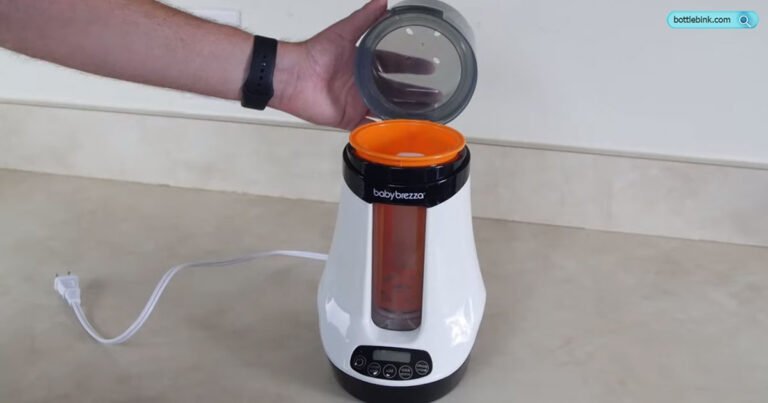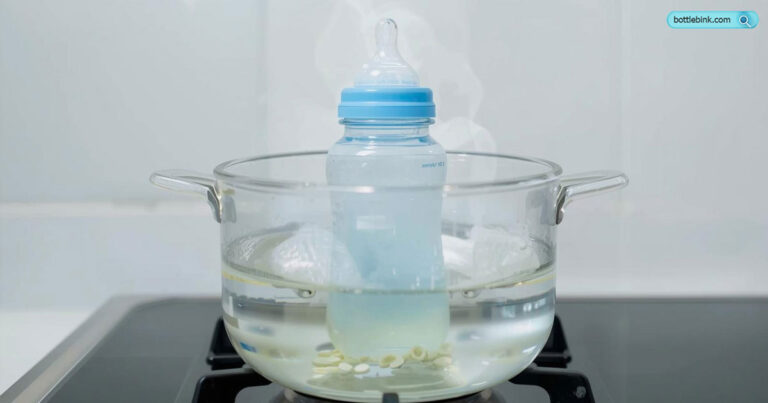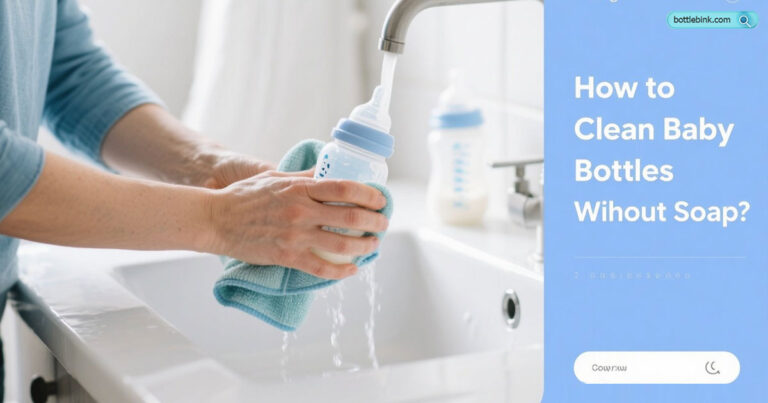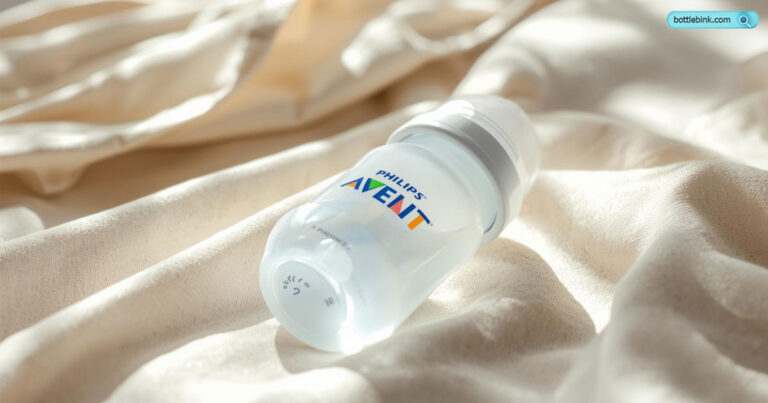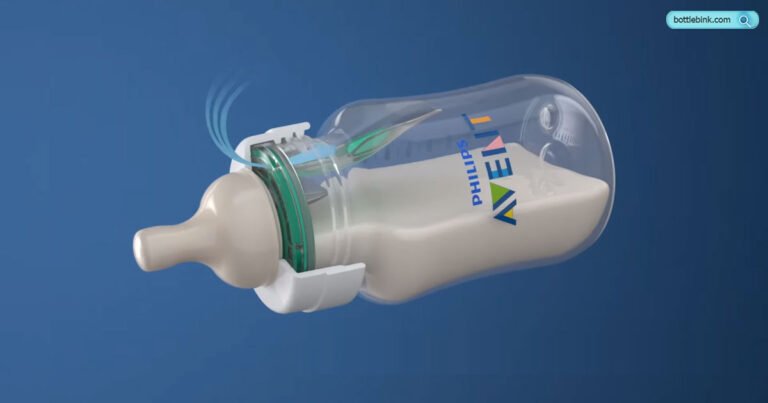How to Warm Baby Bottle: Quick and Easy Techniques
Concern about How to Warm Baby Bottle? To warm a baby bottle, place the bottle in warm water or use a bottle warmer. Avoid using a microwave to warm the bottle.
When it comes to caring for your baby’s needs, ensuring the correct temperature of their bottle is essential for their comfort and safety. Whether you are using formula or expressed breastmilk, knowing how to effectively warm your baby’s bottle can make feeding time a more pleasant experience for both you and your little one.
Understanding the proper methods and avoiding potential pitfalls, such as using a microwave, is crucial in maintaining the integrity of the nutrients in the milk. We will explore the best practices for safely and efficiently warming your baby’s bottle, providing you with the confidence to meet your baby’s needs effectively.

Choosing The Right Bottle
When it comes to bottle feeding your baby, choosing the right bottle is essential. The right bottle can make the feeding process easier and more comfortable for both you and your little one. In this section, we will discuss two important factors to consider when selecting a baby bottle: the appropriate size and the material of the bottle.
Selecting The Appropriate Size
The size of the bottle is an important consideration when choosing the right one for your baby. Babies have different feeding needs, so it’s crucial to select a bottle that can accommodate the right amount of milk or formula. Here are some size options to consider:
| Bottle Size | Age Group |
| 4 oz | Newborns and younger infants |
| 8 oz | Older infants and toddlers |
Choosing the appropriate bottle size ensures that your baby gets enough nutrition during feeding without overfeeding or wasting milk. It’s important to keep in mind that as your baby grows, their feeding needs may change, so you may need to transition to a larger bottle size.
Considering The Material
The material of the baby bottle is another crucial factor to consider. There are different options available, each with its own set of pros and cons. Here are a few commonly used materials for baby bottles:
- Plastic Bottles: These are lightweight and durable, making them a popular choice for many parents. Look for BPA-free plastic bottles to ensure the safety of your baby.
- Glass Bottles: Glass bottles are a great option if you prefer a chemical-free and eco-friendly choice. They are easy to clean and maintain but may be heavier compared to plastic bottles.
- Silicone Bottles: Silicone bottles are flexible and easy to squeeze, making them suitable for younger babies who are transitioning from breastfeeding. They are also free from harmful chemicals.
Consider your baby’s needs and your preferences when choosing the bottle material. It’s advisable to have a few different bottles on hand to see which one works best for your baby.
In conclusion, choosing the right bottle size and material is crucial for comfortable and efficient feeding. Selecting an appropriate bottle size based on your baby’s age ensures they get the right amount of milk or formula without any wastage. The material of the bottle should be safe, durable, and suitable for your baby’s needs. By considering these factors, you can make the bottle feeding experience a positive one for both you and your little one.

Preparation Of Bottle And Milk
To warm a baby bottle, you can set it in warm water, use a bottle warmer, or add warm water to the bottle. Avoid using a microwave as it may cause changes to the milk. Make sure to test the temperature on the inside of your wrist before feeding your baby.
Gathering Necessary Supplies
To warm a baby bottle, you will need a few necessary supplies to ensure a safe and efficient process. These include the baby bottle, milk or formula, a bowl or bottle warmer, warm water, and a sterilized container for mixing the milk with water, if necessary.
Warming Technique
Once you have gathered the necessary supplies, you can proceed to warm the baby bottle using the following technique:
- Start by boiling water in a kettle or pot.
- Allow the boiled water to cool for a few minutes.
- Fill a bowl or container with warm water and place the baby bottle in it, ensuring that the water level is at the same height as the milk inside the bottle.
- Alternatively, use a bottle warmer specifically designed for baby bottles, following the manufacturer’s instructions for heating.
Safety Measures
When warming a baby bottle, it is crucial to prioritize safety measures to prevent any risk of burns or overheating. By implementing these safety measures, parents can ensure the proper temperature for the baby’s nourishment without compromising their safety.
Testing The Temperature
After heating the bottle, always test the temperature by shaking the bottle gently and dripping a few drops onto the inside of your wrist. The liquid should feel warm, not hot, to prevent scalding the baby’s mouth. Use a digital food thermometer to confirm the temperature is not more than 100°F (37.8°C). This simple test can prevent accidental burns and guarantee the bottle is appropriately warmed for consumption.
Avoiding Hot Spots
To ensure uniform heating, gently swirl the bottle after heating or place it under warm, running water. Avoid using the microwave to heat the bottle, as it can create hot spots that may burn the baby’s mouth. Inspect the bottle’s temperature evenly across all sides before feeding the baby to safeguard against any potential hot spots.
Feeding The Baby
To warm a baby bottle, try setting the bottle in warm water or adding warm water directly to the bottle. You can also use a bottle warmer or microwave, but be sure to test the temperature before feeding your baby.
Positioning The Baby
The first step in feeding your baby is to ensure proper positioning. This is crucial for the baby’s comfort and safety during the feeding process. Here are a few tips to help you position your baby correctly:
- Hold your baby in a semi-upright position, with their head slightly elevated.
- Support your baby’s neck and head with one hand while using the other hand to hold the bottle.
- Make sure your baby’s nose is not blocked to ensure proper breathing.
- Ensure that your baby’s body is comfortably supported, either by holding them in your arms or using a feeding pillow.
Ensuring Comfort
Feeding time should be a comfortable and enjoyable experience for both you and your baby. Here are some tips to ensure your baby’s comfort:
- Choose a quiet and calm area for feeding to minimize distractions.
- Check the temperature of the room to ensure your baby is neither too hot nor too cold.
- Use a soft and comfortable feeding chair or cushion for added support.
- Make sure the baby’s diaper is clean and dry before starting the feeding.
- Engage in gentle and soothing conversation with your baby to create a relaxed atmosphere.
After Feeding Care
To warm a baby bottle safely, set the bottle in warm water or use a bottle warmer. Avoid microwaving, which can cause uneven heating and destroy nutrients in breast milk. Check the temperature by dripping a few drops of milk on your wrist to ensure it’s comfortably warm for your baby.
Refrigerating Leftover Milk
If you have any leftover milk after feeding your baby, it’s important to handle it properly to maintain its freshness and safety. To refrigerate the leftover milk, follow these steps:
- Pour the remaining milk into a clean, sterile baby bottle.
- Securely seal the bottle with a tight-fitting lid to prevent any contamination.
- Label the bottle with the date and time of expressed milk to ensure you use it within the recommended time frame.
- Store the bottle in the refrigerator at a temperature of 4°C (39°F) or lower.
- Use the refrigerated milk within 24 hours to maintain its freshness and quality.
Cleaning The Bottle
Properly cleaning your baby’s bottle is essential to prevent the growth of harmful bacteria and ensure your baby’s health. Here’s how to clean the bottle effectively:
- Step 1: Disassemble the bottle, including the nipple, collar, and any other removable parts.
- Step 2: Rinse all parts with warm water to remove any remaining milk or formula.
- Step 3: Wash all the parts using a mild detergent and a bottle brush to scrub away any residue.
- Step 4: Rinse all parts thoroughly with warm water to ensure there are no soap traces left.
- Step 5: Sterilize the bottle and its parts by boiling them in water for 5 minutes or using a sterilizer.
- Step 6: Allow all the parts to air dry completely before reassembling the bottle.
FAQs On How To Warm Baby Bottle
What Is The Proper Way To Heat Up A Baby’s Bottle?
To warm a baby’s bottle, set it in warm water or use a bottle warmer. Avoid microwaving. Shake to distribute heat and test temperature before feeding.
How Do I Make My Baby Bottle Warmer?
To make your baby bottle warmer, follow these steps: 1. Fill a bowl or sink with warm water. 2. Place the baby bottle in the warm water, making sure it is fully submerged. 3. Let the bottle sit in the water for a few minutes until it reaches the desired temperature.
4. Remove the bottle from the water and test the temperature on your wrist before giving it to your baby. 5. If the temperature is suitable, you can feed your baby with the warmed bottle.
Is It Good To Heat Up Baby Bottles In Microwave?
Heating up baby bottles in the microwave is not recommended. It may cause changes in the formula or breast milk, such as the loss of vitamins or destruction of protective properties. It’s better to warm the bottle in warm water or using a bottle warmer.
Avoid using the microwave for heating or defrosting breast milk.
How Do You Warm Up Baby Milk From The Fridge?
To warm up baby milk from the fridge, place the bottle in a jug of warm water or hold it under running warm water until it reaches body temperature. Never use a microwave to heat or defrost breast milk.
Conclusion
To safely warm your baby’s bottle, there are a few methods that you can use. One option is to place the bottle in warm water, making sure not to let the water reach the lid to avoid contamination. Another method is to add warm water to the bottle and carefully swirl it to ensure even heating.
You can also ask for hot water or use boiled water in a thermos to warm the bottle. Remember to always check the temperature of the milk on the inside of your wrist before feeding your baby. By following these tips, you can ensure that your baby’s bottle is warmed safely and efficiently.

